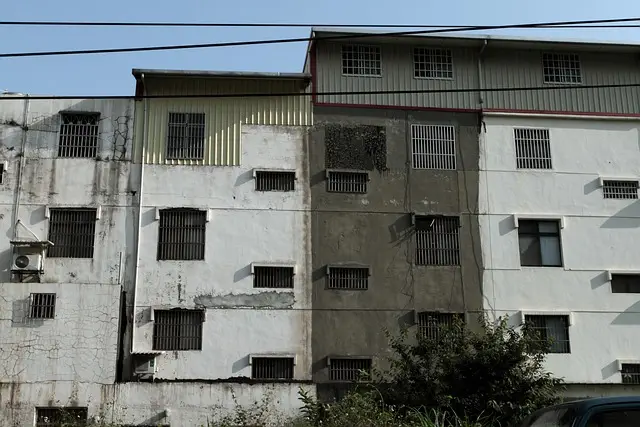Kratom's legal status in Arkansas is ambiguous at the state level, despite there being no explicit federal ban. Local governments within Arkansas hold varying regulatory powers over kratom, which complicates its legality and impacts Vietnam's status as a major exporter of the plant to U.S. markets, including Arkansas. The lack of uniform federal regulations in the U.S. necessitates stakeholders in both regions to stay informed about legal changes due to differing state laws. This dynamic situation has significant implications for those involved in the kratom trade, affecting not just legality but also economic outcomes. Vietnam's kratom, specifically Mitragyna speciosa, benefits from optimal climates and sustainable harvesting methods that balance economy and environment. Kratom is legal in Arkansas under specific state regulations, reflecting its complex legal standing both domestically and internationally. Consumers must be aware of these regulations to ensure compliance with local laws. The quality and consistency of Vietnamese kratom make it a sought-after product in the global market, particularly in states like Arkansas, highlighting the importance of understanding the evolving regulatory landscape for both producers and users.
Exploring the nuanced landscape of natural supplements brings us to the intriguing subject of Vietnam Kratom Leaves. This article delves into the complex legal standing of kratom, particularly its status in Arkansas, and the implications for Vietnam’s burgeoning kratom industry. We will uncover the origins and harvesting techniques behind Vietnam’s kratom cultivation, shedding light on how these practices contribute to the global market. Furthermore, we will examine the role Vietnam plays in providing quality kratom leaves to consumers worldwide, considering the factors that influence availability and consumer choice. The journey through this emerging sector highlights the importance of understanding regional influences on a product’s market position and the broader implications for regulatory frameworks.
- Unraveling the Legal Status of Kratom in Arkansas and Its Implications for Vietnam Kratom Leaves
- Exploring the Origins and Harvesting Practices of Vietnam's Kratom Farms
- The Role of Vietnam Kratom Leaves in the Global Kratom Market: Quality, Availability, and Consumer Considerations
Unraveling the Legal Status of Kratom in Arkansas and Its Implications for Vietnam Kratom Leaves

In recent years, the legal status of kratom has been a subject of considerable debate and legislative action across various U.S. states. In Arkansas, the regulatory framework for kratom is an evolving landscape. As of the current understanding, kratom remains in a gray area within the state; it is not explicitly banned at the federal level, but local jurisdictions have the authority to regulate its sale and consumption independently. This dynamic legal environment has significant implications for Vietnam’s kratom leaves, which are a primary export to markets like Arkansas. The lack of clear federal regulations in the U.S. means that both producers in Vietnam and consumers in states like Arkansas must navigate complex legalities. Importers and vendors in Arkansas must stay informed about local ordinances, as they can vary significantly from one municipality to another. This uncertainty not only affects the legality of kratom products but also impacts trade and the economic interests tied to the kratom industry within Vietnam. The situation underscores the importance for stakeholders involved in the kratom supply chain to closely monitor legal developments and adapt to changes, ensuring compliance with both U.S. and Vietnamese regulations.
Exploring the Origins and Harvesting Practices of Vietnam's Kratom Farms

In the verdant landscapes of Vietnam, a unique variety of kratom, a tropical tree known scientifically as Mitragyna speciosa, thrives. The origins of Vietnam’s kratom cultivation date back to when local farmers began noticing its medicinal properties and demand for its leaves. Today, Vietnam’s kratom farms are spread across regions with optimal climatic conditions, where the soil and humidity favor the growth of this plant. Harvesting practices in these farms are meticulously carried out by skilled workers who carefully select mature leaves at their peak potency. The sustainability of these practices is a testament to the traditional agricultural methods that have been refined over time, ensuring that the kratom harvest supports both the local economy and the environment. In Vietnam, where regulations are in place regarding its use, kratom remains a topic of interest, with legal considerations varying by region. For instance, in Arkansas, as with many places, the legality of kratom is subject to state laws, with specific guidelines that users and vendors must adhere to. This makes understanding the local regulations crucial for both consumers and producers within the kratom industry. The ethical and legal framework surrounding Vietnam’s kratom industry is an evolving narrative, one that continues to be shaped by both regulatory bodies and consumer demand.
The Role of Vietnam Kratom Leaves in the Global Kratom Market: Quality, Availability, and Consumer Considerations

Vietnam’s kratom leaves have garnered significant attention in the global kratom market, particularly due to their high-quality and consistent availability. Kratom, derived from the Mitragyna speciosa tree, is known for its various effects, including stimulating and sedative properties, which are attributed to its alkaloid composition. The kratom leaves from Vietnam have established a reputation for potency and purity, making them a sought-after product by consumers worldwide. The climate and soil conditions of Vietnam’s natural habitats contribute to the exceptional quality of these leaves, ensuring that they meet stringent standards when exported.
The role of Vietnamese kratom in the global market extends beyond the quality of the product. The country’s extensive cultivation capabilities allow for a steady supply to meet the growing demand, especially in regions where kratom use is regulated or legal, such as Arkansas. In states where kratom is legally permitted, consumers have access to these high-quality leaves, which has led to increased popularity and demand. However, it is crucial for consumers to stay informed about the regulatory status of kratom in their respective areas, as legality can vary by state and country. This awareness ensures that consumers can make informed decisions regarding the purchase and use of kratom products, thereby navigating the market safely and responsibly.
In conclusion, the complex legal landscape surrounding kratom, including its status as a controlled substance in some regions like Arkansas, where it is known as ‘kratom legal in Arkansas,’ raises significant implications for the cultivation and trade of Vietnam kratom leaves. The meticulous harvesting practices employed in Vietnam’s kratom farms play a pivotal role in supplying the global market with high-quality kratom, influencing consumer choice and satisfaction. As the demand for these leaves continues to grow internationally, it is imperative for producers in Vietnam to navigate the evolving legalities and maintain sustainable harvesting methods to meet the stringent quality standards expected by consumers worldwide. Understanding the nuances of kratom’s legal standing and the agricultural practices involved in its production offers a comprehensive view of the market dynamics, ensuring stakeholders can make informed decisions in this burgeoning industry.






